Hong Wang
Indicating Robot Vision Capabilities with Augmented Reality
Nov 05, 2025Abstract:Research indicates that humans can mistakenly assume that robots and humans have the same field of view (FoV), possessing an inaccurate mental model of robots. This misperception may lead to failures during human-robot collaboration tasks where robots might be asked to complete impossible tasks about out-of-view objects. The issue is more severe when robots do not have a chance to scan the scene to update their world model while focusing on assigned tasks. To help align humans' mental models of robots' vision capabilities, we propose four FoV indicators in augmented reality (AR) and conducted a user human-subjects experiment (N=41) to evaluate them in terms of accuracy, confidence, task efficiency, and workload. These indicators span a spectrum from egocentric (robot's eye and head space) to allocentric (task space). Results showed that the allocentric blocks at the task space had the highest accuracy with a delay in interpreting the robot's FoV. The egocentric indicator of deeper eye sockets, possible for physical alteration, also increased accuracy. In all indicators, participants' confidence was high while cognitive load remained low. Finally, we contribute six guidelines for practitioners to apply our AR indicators or physical alterations to align humans' mental models with robots' vision capabilities.
Accelerating Data Generation for Nonlinear temporal PDEs via homologous perturbation in solution space
Oct 24, 2025Abstract:Data-driven deep learning methods like neural operators have advanced in solving nonlinear temporal partial differential equations (PDEs). However, these methods require large quantities of solution pairs\u2014the solution functions and right-hand sides (RHS) of the equations. These pairs are typically generated via traditional numerical methods, which need thousands of time steps iterations far more than the dozens required for training, creating heavy computational and temporal overheads. To address these challenges, we propose a novel data generation algorithm, called HOmologous Perturbation in Solution Space (HOPSS), which directly generates training datasets with fewer time steps rather than following the traditional approach of generating large time steps datasets. This algorithm simultaneously accelerates dataset generation and preserves the approximate precision required for model training. Specifically, we first obtain a set of base solution functions from a reliable solver, usually with thousands of time steps, and then align them in time steps with training datasets by downsampling. Subsequently, we propose a "homologous perturbation" approach: by combining two solution functions (one as the primary function, the other as a homologous perturbation term scaled by a small scalar) with random noise, we efficiently generate comparable-precision PDE data points. Finally, using these data points, we compute the variation in the original equation's RHS to form new solution pairs. Theoretical and experimental results show HOPSS lowers time complexity. For example, on the Navier-Stokes equation, it generates 10,000 samples in approximately 10% of traditional methods' time, with comparable model training performance.
Unlocking the Potential of MLLMs in Referring Expression Segmentation via a Light-weight Mask Decode
Aug 06, 2025Abstract:Reference Expression Segmentation (RES) aims to segment image regions specified by referring expressions and has become popular with the rise of multimodal large models (MLLMs). While MLLMs excel in semantic understanding, their token-generation paradigm struggles with pixel-level dense prediction. Existing RES methods either couple MLLMs with the parameter-heavy Segment Anything Model (SAM) with 632M network parameters or adopt SAM-free lightweight pipelines that sacrifice accuracy. To address the trade-off between performance and cost, we specifically propose MLLMSeg, a novel framework that fully exploits the inherent visual detail features encoded in the MLLM vision encoder without introducing an extra visual encoder. Besides, we propose a detail-enhanced and semantic-consistent feature fusion module (DSFF) that fully integrates the detail-related visual feature with the semantic-related feature output by the large language model (LLM) of MLLM. Finally, we establish a light-weight mask decoder with only 34M network parameters that optimally leverages detailed spatial features from the visual encoder and semantic features from the LLM to achieve precise mask prediction. Extensive experiments demonstrate that our method generally surpasses both SAM-based and SAM-free competitors, striking a better balance between performance and cost. Code is available at https://github.com/jcwang0602/MLLMSeg.
"Who Should I Believe?": User Interpretation and Decision-Making When a Family Healthcare Robot Contradicts Human Memory
Jun 26, 2025Abstract:Advancements in robotic capabilities for providing physical assistance, psychological support, and daily health management are making the deployment of intelligent healthcare robots in home environments increasingly feasible in the near future. However, challenges arise when the information provided by these robots contradicts users' memory, raising concerns about user trust and decision-making. This paper presents a study that examines how varying a robot's level of transparency and sociability influences user interpretation, decision-making and perceived trust when faced with conflicting information from a robot. In a 2 x 2 between-subjects online study, 176 participants watched videos of a Furhat robot acting as a family healthcare assistant and suggesting a fictional user to take medication at a different time from that remembered by the user. Results indicate that robot transparency influenced users' interpretation of information discrepancies: with a low transparency robot, the most frequent assumption was that the user had not correctly remembered the time, while with the high transparency robot, participants were more likely to attribute the discrepancy to external factors, such as a partner or another household member modifying the robot's information. Additionally, participants exhibited a tendency toward overtrust, often prioritizing the robot's recommendations over the user's memory, even when suspecting system malfunctions or third-party interference. These findings highlight the impact of transparency mechanisms in robotic systems, the complexity and importance associated with system access control for multi-user robots deployed in home environments, and the potential risks of users' over reliance on robots in sensitive domains such as healthcare.
Sum Rate Maximization for Pinching Antennas Assisted RSMA System With Multiple Waveguides
Jun 12, 2025Abstract:In this letter, a pinching antennas (PAs) assisted rate splitting multiple access (RSMA) system with multiple waveguides is investigated to maximize sum rate. A two-step algorithm is proposed to determine PA activation scheme and optimize the waveguide beamforming. Specifically, a low complexity spatial correlation and distance based method is proposed for PA activation selection. After determining the PA activation status, a semi-definite programming (SDP) based successive convex approximation (SCA) is leveraged to obtain the optimal waveguide beamforming. Simulation results show that the proposed multiple waveguides based PAs assisted RSMA method achieves better performance than various benchmarking schemes.
DriveSOTIF: Advancing Perception SOTIF Through Multimodal Large Language Models
May 11, 2025Abstract:Human drivers naturally possess the ability to perceive driving scenarios, predict potential hazards, and react instinctively due to their spatial and causal intelligence, which allows them to perceive, understand, predict, and interact with the 3D world both spatially and temporally. Autonomous vehicles, however, lack these capabilities, leading to challenges in effectively managing perception-related Safety of the Intended Functionality (SOTIF) risks, particularly in complex and unpredictable driving conditions. To address this gap, we propose an approach that fine-tunes multimodal language models (MLLMs) on a customized dataset specifically designed to capture perception-related SOTIF scenarios. Model benchmarking demonstrates that this tailored dataset enables the models to better understand and respond to these complex driving situations. Additionally, in real-world case studies, the proposed method correctly handles challenging scenarios that even human drivers may find difficult. Real-time performance tests further indicate the potential for the models to operate efficiently in live driving environments. This approach, along with the dataset generation pipeline, shows significant promise for improving the identification, cognition, prediction, and reaction to SOTIF-related risks in autonomous driving systems. The dataset and information are available: https://github.com/s95huang/DriveSOTIF.git
Progressive Language-guided Visual Learning for Multi-Task Visual Grounding
Apr 22, 2025Abstract:Multi-task visual grounding (MTVG) includes two sub-tasks, i.e., Referring Expression Comprehension (REC) and Referring Expression Segmentation (RES). The existing representative approaches generally follow the research pipeline which mainly consists of three core procedures, including independent feature extraction for visual and linguistic modalities, respectively, cross-modal interaction module, and independent prediction heads for different sub-tasks. Albeit achieving remarkable performance, this research line has two limitations: 1) The linguistic content has not been fully injected into the entire visual backbone for boosting more effective visual feature extraction and it needs an extra cross-modal interaction module; 2) The relationship between REC and RES tasks is not effectively exploited to help the collaborative prediction for more accurate output. To deal with these problems, in this paper, we propose a Progressive Language-guided Visual Learning framework for multi-task visual grounding, called PLVL, which not only finely mine the inherent feature expression of the visual modality itself but also progressively inject the language information to help learn linguistic-related visual features. In this manner, our PLVL does not need additional cross-modal fusion module while fully introducing the language guidance. Furthermore, we analyze that the localization center for REC would help identify the to-be-segmented object region for RES to some extent. Inspired by this investigation, we design a multi-task head to accomplish collaborative predictions for these two sub-tasks. Extensive experiments conducted on several benchmark datasets comprehensively substantiate that our PLVL obviously outperforms the representative methods in both REC and RES tasks. https://github.com/jcwang0602/PLVL
NTIRE 2025 Challenge on Day and Night Raindrop Removal for Dual-Focused Images: Methods and Results
Apr 19, 2025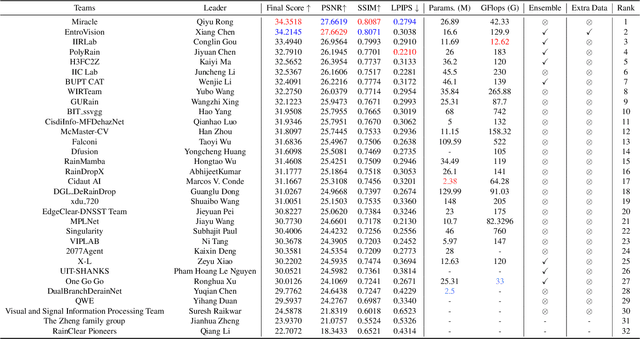
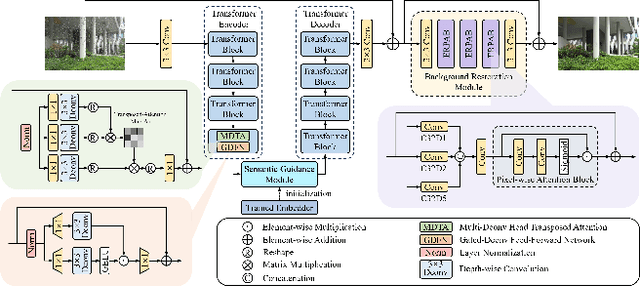
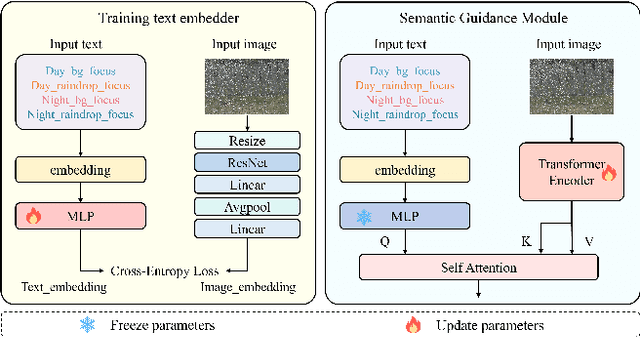
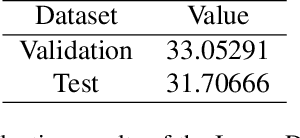
Abstract:This paper reviews the NTIRE 2025 Challenge on Day and Night Raindrop Removal for Dual-Focused Images. This challenge received a wide range of impressive solutions, which are developed and evaluated using our collected real-world Raindrop Clarity dataset. Unlike existing deraining datasets, our Raindrop Clarity dataset is more diverse and challenging in degradation types and contents, which includes day raindrop-focused, day background-focused, night raindrop-focused, and night background-focused degradations. This dataset is divided into three subsets for competition: 14,139 images for training, 240 images for validation, and 731 images for testing. The primary objective of this challenge is to establish a new and powerful benchmark for the task of removing raindrops under varying lighting and focus conditions. There are a total of 361 participants in the competition, and 32 teams submitting valid solutions and fact sheets for the final testing phase. These submissions achieved state-of-the-art (SOTA) performance on the Raindrop Clarity dataset. The project can be found at https://lixinustc.github.io/CVPR-NTIRE2025-RainDrop-Competition.github.io/.
Privacy-Aware Joint DNN Model Deployment and Partition Optimization for Delay-Efficient Collaborative Edge Inference
Feb 22, 2025


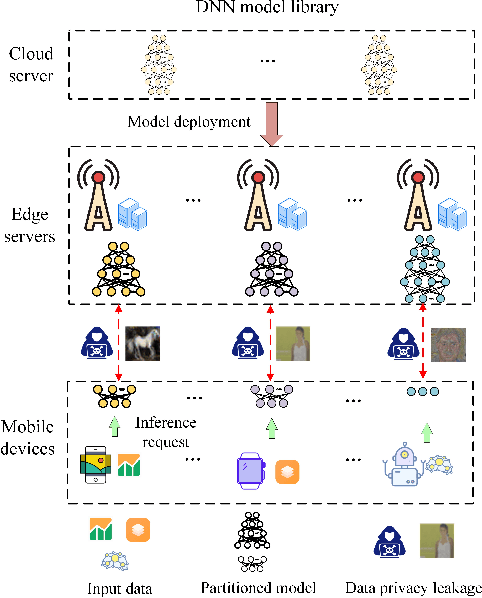
Abstract:Edge inference (EI) is a key solution to address the growing challenges of delayed response times, limited scalability, and privacy concerns in cloud-based Deep Neural Network (DNN) inference. However, deploying DNN models on resource-constrained edge devices faces more severe challenges, such as model storage limitations, dynamic service requests, and privacy risks. This paper proposes a novel framework for privacy-aware joint DNN model deployment and partition optimization to minimize long-term average inference delay under resource and privacy constraints. Specifically, the problem is formulated as a complex optimization problem considering model deployment, user-server association, and model partition strategies. To handle the NP-hardness and future uncertainties, a Lyapunov-based approach is introduced to transform the long-term optimization into a single-time-slot problem, ensuring system performance. Additionally, a coalition formation game model is proposed for edge server association, and a greedy-based algorithm is developed for model deployment within each coalition to efficiently solve the problem. Extensive simulations show that the proposed algorithms effectively reduce inference delay while satisfying privacy constraints, outperforming baseline approaches in various scenarios.
DenseGNN: universal and scalable deeper graph neural networks for high-performance property prediction in crystals and molecules
Jan 05, 2025Abstract:Generative models generate vast numbers of hypothetical materials, necessitating fast, accurate models for property prediction. Graph Neural Networks (GNNs) excel in this domain but face challenges like high training costs, domain adaptation issues, and over-smoothing. We introduce DenseGNN, which employs Dense Connectivity Network (DCN), Hierarchical Node-Edge-Graph Residual Networks (HRN), and Local Structure Order Parameters Embedding (LOPE) to address these challenges. DenseGNN achieves state-of-the-art performance on datasets such as JARVIS-DFT, Materials Project, and QM9, improving the performance of models like GIN, Schnet, and Hamnet on materials datasets. By optimizing atomic embeddings and reducing computational costs, DenseGNN enables deeper architectures and surpasses other GNNs in crystal structure distinction, approaching X-ray diffraction method accuracy. This advances materials discovery and design.
* DenseGNN optimizes computational efficiency and accuracy in predicting material properties using DCN, HRN, and LOPE. It enhances transferability and overcomes over-smoothing, enabling deep architectures. Performance improvements on JARVIS-DFT, Materials Project, and QM9 datasets advance materials discovery and design
 Add to Chrome
Add to Chrome Add to Firefox
Add to Firefox Add to Edge
Add to Edge